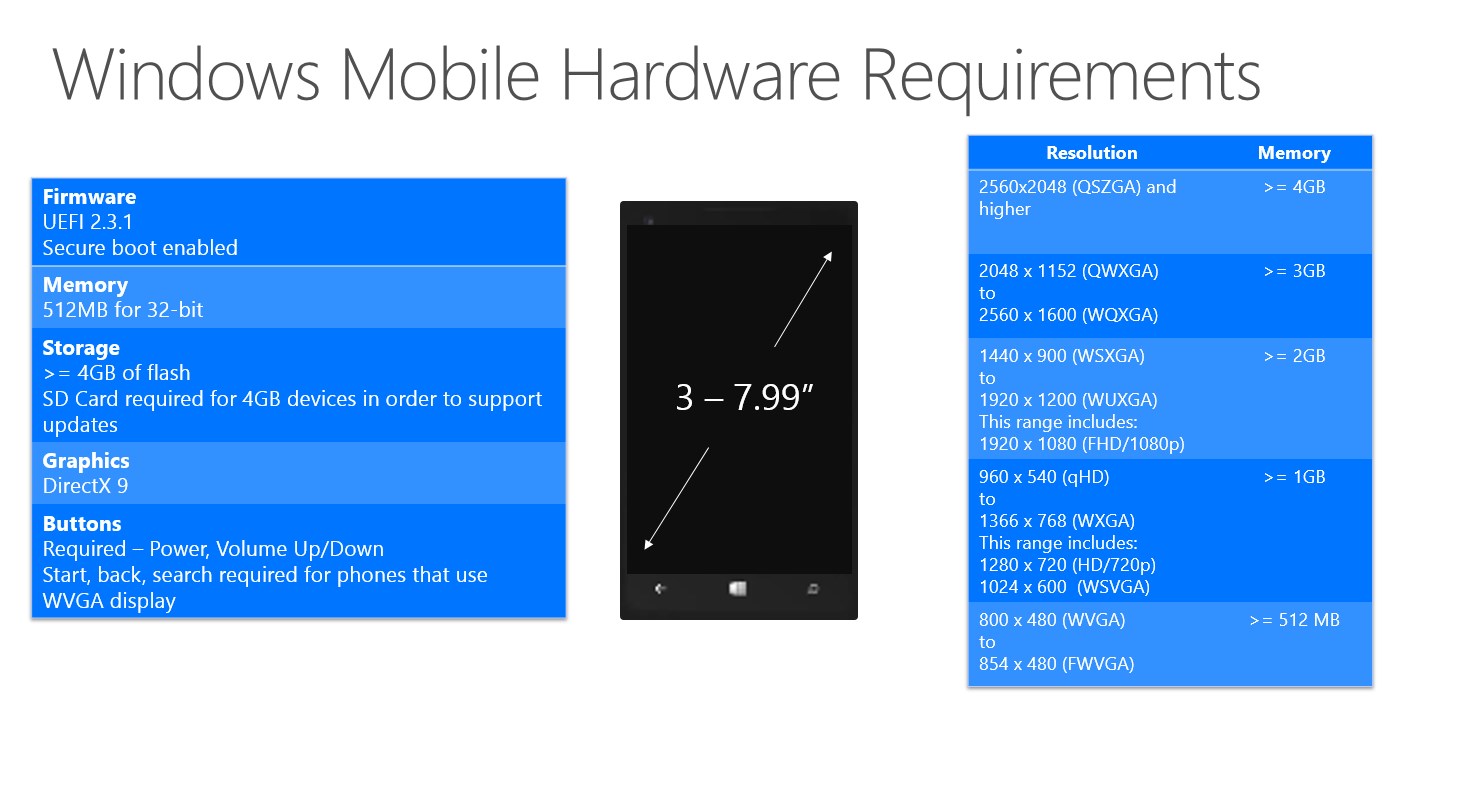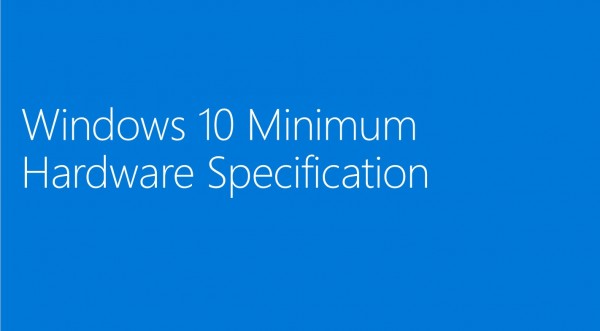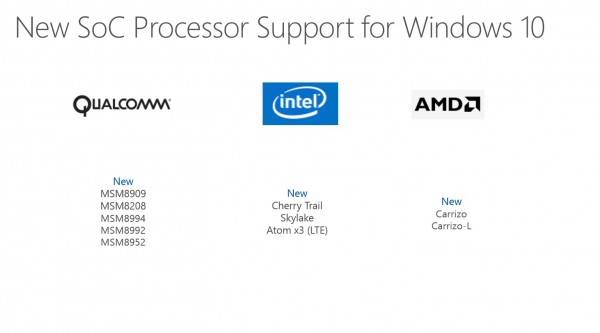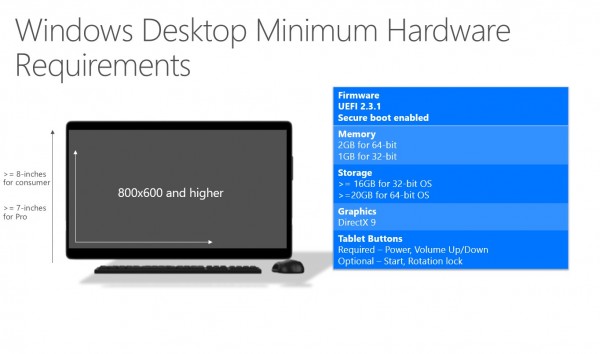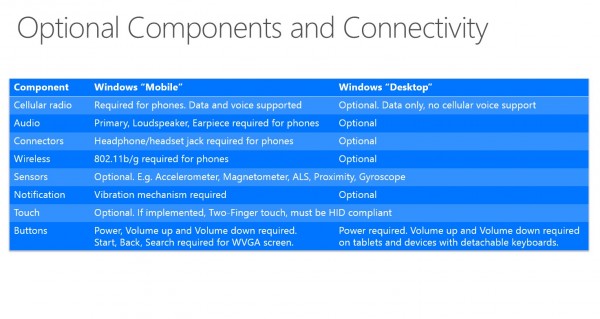The on-going Windows Hardware Engineering Community (WinHEC) conference in China is rather interesting in a sense that not everything are revealed during its keynote sessions. Many of the new facts about Windows 10 are actually revealed through the numerous sessions that happen throughout the two-day conference.
Although they are meant for Microsoft’s hardware, design, and manufacturing partners, these sessions do provide plenty of information that consumers might need to be aware of regarding Windows 10. For example, one of the sessions has actually revealed the minimum hardware requirements for the new operating system.
Delivered by Paul Reed, a Senior Program Manager at Microsoft, the session covered both PCs (referred to as “desktop”) and phones (“mobile”). The presentation started with a list of new processors that are officially supported by Windows 10 including Qualcomm processors such as the Snapdragon 210 (MSM8909), Snapdragon 208 (MSM8208), Snapdragon 810 (MSM8994), Snapdragon 808 (MSM8992), and Snapdragon 615 (MSM8952).
Windows 10 also supports the upcoming sixth-generation Intel Core processors, codenamed Skylake, together with the recently-announced Intel Atom x5 and x7 chips, codenamed Cherry Trail, as well as the LTE version of the Intel Atom x3. The upcoming AMD Carrizo chips are supported as well, covering both standard and low-powered variants.
Apart from new processors, Paul also revealed the basic Windows 10 requirements for phones which pretty much sets the tone for future Windows-based smartphones. Among such requirements is the range of display sizes, from 3 to 7.99 inches. Windows 10 for phones also supports graphic resolutions from 800 x 480 to more than 2560 x 2048, although the actual supported resolution depends on the RAM that is equipped into the phones. In another words, higher resolutions requires more RAM.
Speaking about memory, Windows 10 for phones requires at least 512MB for the 32-bit variant of the operating system and also requires at least 4GB worth of internal storage although devices with such low storage is also required to feature SD card support in order to allow them to be updated.
As for the “desktop” variant of Windows 10 which should cover desktop PC, laptops, and tablets, the minimum graphics resolution that the operating system supports is 800 x 600. Microsoft has also pointed out that the minimum screen size for consumer devices is 8 inches while “pro” devices is 7 inches. Reed did not specify what does “pro” devices means though, unfortunately.
Of course, the minimum storage required for the “desktop” version of Windows 10 is understandably higher at 16GB for 32-bit and 20GB for 64-bit. Memory-wise, the 32-bit version requires at least 1GB while the 64-bit variant needs a minimum 2GB.
At the same time, phones, tablets and devices with detachable keyboards are also required to have power and volume buttons. Phones with 800 x 480 (WVGA) displays need to feature additional buttons including Start, Back, and Search. Last but not least, both “mobile” and “desktop” versions of Windows 10 require UEFI 2.3.1 firmware with secure boot enabled and DirectX 9-capable GPUs.
From the looks of it, these hardware requirements are meant for upcoming devices rather than existing PCs and phones. After all, existing Windows 7, Windows 8.1, and Windows Phone 8.1 users will receive free upgrade to Windows 10 which means their current hardware should be able to support the new operating system beforehand.
That being said, we will continue to keep a look for the actual minimum system requirements for Windows 10 that cater to current and future devices – these should be revealed as we get closer to the global launch of Windows 10 in few months’ time.
[Source: WinHEC 2015 @ Channel 9]
Follow us on Instagram, Facebook, Twitter or Telegram for more updates and breaking news.


